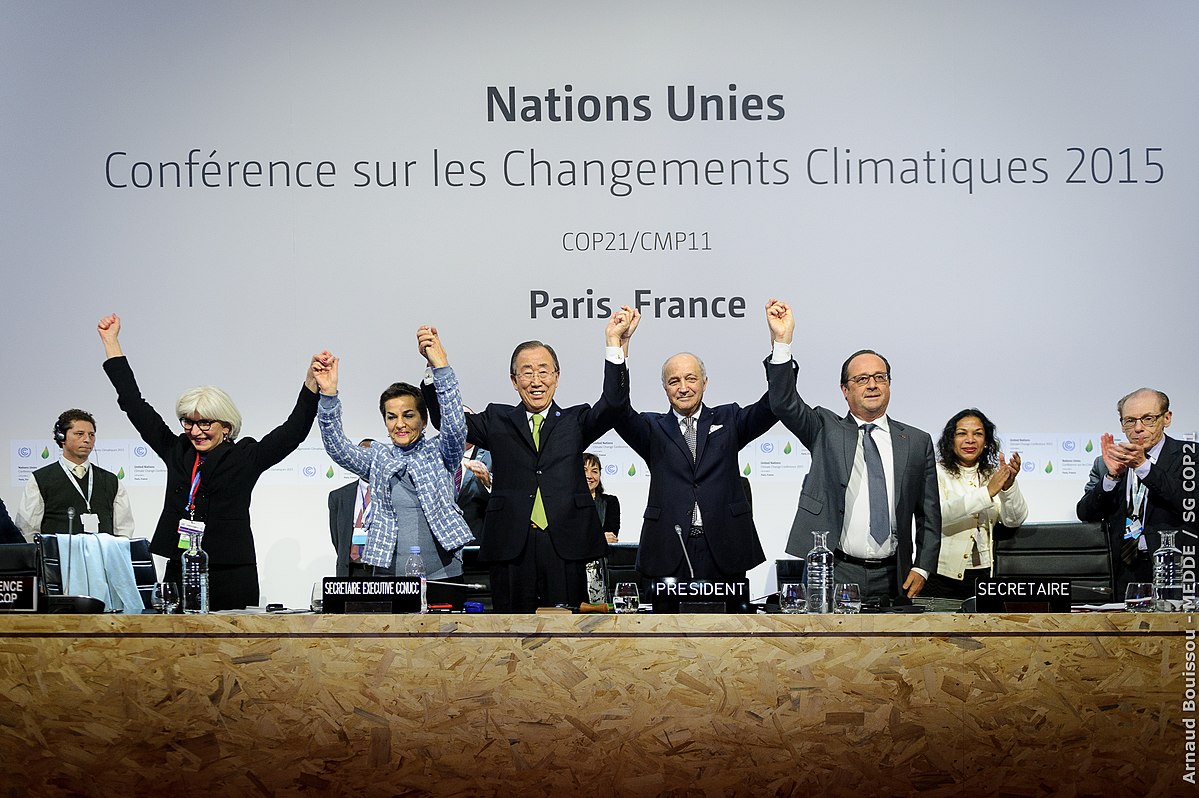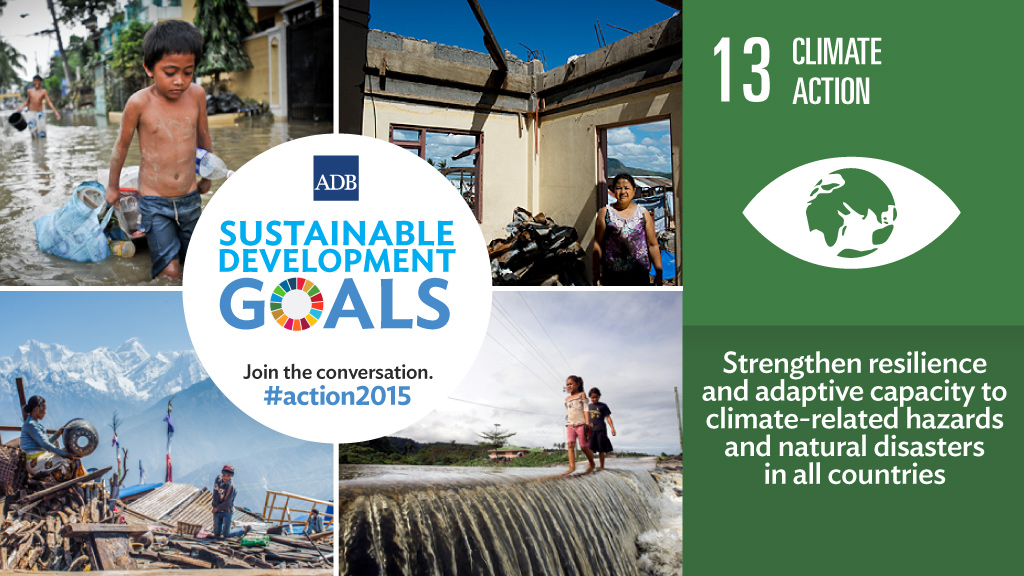Circular economy: A key lever for achieving the UN sustainable development goals
SHYAAM RAMKUMAR (YOUNG PROFESSIONAL)
SUSTAINABLE DEVELOPMENT GOAL 13:
Neem dringend actie om de klimaatverandering en haar impact te bestrijden
https://unric.org/nl/sdg-13
Since the Sustainable Development Goals were adopted in September 2015, we have been encouraged by the fact that Circle Economy members and the broader business community have taken them up. According to a study by PWC, over 92% of businesses and 33% of citizens are aware of the SDGs, and 71% of businesses have started to take action on them1.
In the wake of the landmark agreement reached in Paris during COP21 and recent discussions in Marrakesh during COP22, one particular SDG is dominating global discussions – Goal 13: Climate Action. In Paris, 195 countries united behind a commitment to reduce emissions and take the necessary steps to achieve the targets outlined in Goal 13.
A white paper, co-authors by Circle Economy and Ecofys, analyses the role that the circular economy can play in reaching the Paris targets. Current commitments, which emphasize renewables, energy, and resource efficiency, will achieve only 50% of the necessary reductions to keep temperatures under 1.5°C.2

Plenary session of the COP21 for the adoption of the Paris Accord United Nations Climate Change Conference Paris Le Bourget, Photo Credits: Arnaud Bouissou, Wikimedia Commons
Potential for Circular Economy to Reduce the Emissions Gap
Our provisional analysis illustrated that if the circular economy is implemented at a systemic level this remaining gap could be reduced. Circular economy strategies that focus on sharing, modular design, refurbishment, and optimised cascading, are estimated to mitigate global emissions by an additional 25-30%2. Pursuing these strategies in the Netherlands can enable the country to become a leader in climate change mitigation.
7 Key elements of a circular economy
The circular economy is an economy that is designed to be as regenerative and as waste free as possible. Circle Economy defines this new economy through 7 key elements, each of which can help to provide practical and scalable opportunities to reduce our carbon footprint.

Sustainable Development Goal #13: Climate Action Photo Credits: Asian Development Bank, Flickr
Prioritise regenerative resources
Ensure that renewable, reusable, and non-toxic resources are utilised as materials and energy in an efficient way.
Wooden skyscrapers are planned in Amsterdam, Stockholm, Vancouver, and London. While 1,200 tonnes of CO2 are produced from constructing a skyscraper out of concrete and steel, 3,100 tonnes of CO2 are captured by buildings made out of wood.2
Preserve and extend what’s already made
For the period of time that resources remain in use, they should be maintained, repaired, and upgraded to maximise their lifespan. When no longer in use, resources should be given a second life through take back strategies when applicable.
Furniture producer Desko takes back and refurbishes furniture that has reached the end-of-use stage. Compared to a linear sales model, this takeback model has enabled the company to save an estimated Use waste as a resource
Utilise waste streams as a source of secondary resources and recover waste for reuse and recycling.
FrieslandCampina plans to build a pilot facility to process cow manure for the production of biogas and refined minerals. The installation aims to process 8.5 million tonnes of manure into biogas by 2020, resulting in nearly 1.2 million tonnes of CO2 reductions2.
Design for the future
Use the systems perspective during the design process in order to select the right materials, design for appropriate lifetime, and design for extended future use.
Fairphone’s latest mobile phone model, Fairphone 2, has a modular design to enable easy repair and replacement of parts and components. This design enables a nearly 30% reduction in CO2 emissions across the lifecycle of the Fairphone 24.
Collaborate to create joint value
Increase transparency and create joint value by working collaboratively throughout the supply chain, both internally within organisations and with the public sector.
Circle Economy partnered with Salvation Army ReShare and Recover to recycle used military uniforms into yarn. An analysis conducted on yarns made with 80% recycled uniforms shows a reduction in CO2 emissions of 33%, compared to a non-recycled yarns5.
Rethink the business model
Consider opportunities to create greater value and align incentives through business models that build on the interaction between products and services.
MUD Jeans’ Lease-A-Jeans business model enables customers to lease instead of buy a pair of jeans for a monthly fee over a 12-month period. Compared to selling the jeans, the Lease-A-Jeans model reduces CO2 emissions by 45%6.
Incorporate digital technology
Track and optimise resource use and strengthen connections between supply chain actors by using digital, online platforms and technologies that provide insights.
Zipcar integrates digital technologies to enable convenient car sharing. Car sharing has shown to reduce driving by nearly 30% and increase public transport by 46%, resulting in nearly 40% reductions in CO2 emissions2.
The aspects of a circular economy detailed above provide a variety of benefits that can help to achieve not only Goal 13 (Climate Action), but many of the other SDG goals and targets. Circle Economy is currently working to define the links between the SDGs and the circular economy. We hope to collaborate with NVVN, the UN, and other organisations to highlight how transitioning towards a circular economy can help to achieve the global goals and targets outlined across the 17 SDGs.
Shyaam Ramkumar is the Knowledge and Innovation Manager at Circle Economy.
He holds an MSc in Industrial Ecology from the Norwegian University of Science and Technology and a BA in Economics and Econometrics from Northwestern University.
He has previously worked as a strategy and sustainability consultant in the United States.
Endnotes
1) Make it your business: Engaging with the Sustainable Development Goals. http://www.pwc.com/gx/en/sustainability/SDG/SDG{bfb8b4827b15e0df3d636cc4328af00f95317b5e6a44a4c67b5ed085bc570bb6}20Research_FINAL.pdf
2) Circle Economy and Ecofys. Implementing Circular Economy Globally Makes Paris Targets Achievable.http://www.circle-economy.com/climatechange
3) Circle Economy and Desko. Duo Slinger Scan. https://www.desko.nl/kantoorinrichters/circulaire-economie.html
4) How sustainable is the Fairphone 2? https://www.fairphone.com/en/2016/11/17/sustainable-fairphone-2-weve-got-results/
5) Circle Economy, Reshare, and Recover. Closing the Loop for Workwear. http://www.energievoorinzet.nl/_files/ReShare%20(1).pdf
6) Blue Dot Register and MUD Jeans. Carbon Footprint Study of Mud Jeans. http://www.mudjeans.eu/wp-content/uploads/2015/11/Blue-Dot-MUD-Jeans-Report.pdf
7)Circle Economy. Making Sense of the Circular Economy –The 7 Key Elements. http://www.circle-economy.com/the-7-key-elements-of-the-circular-economy
